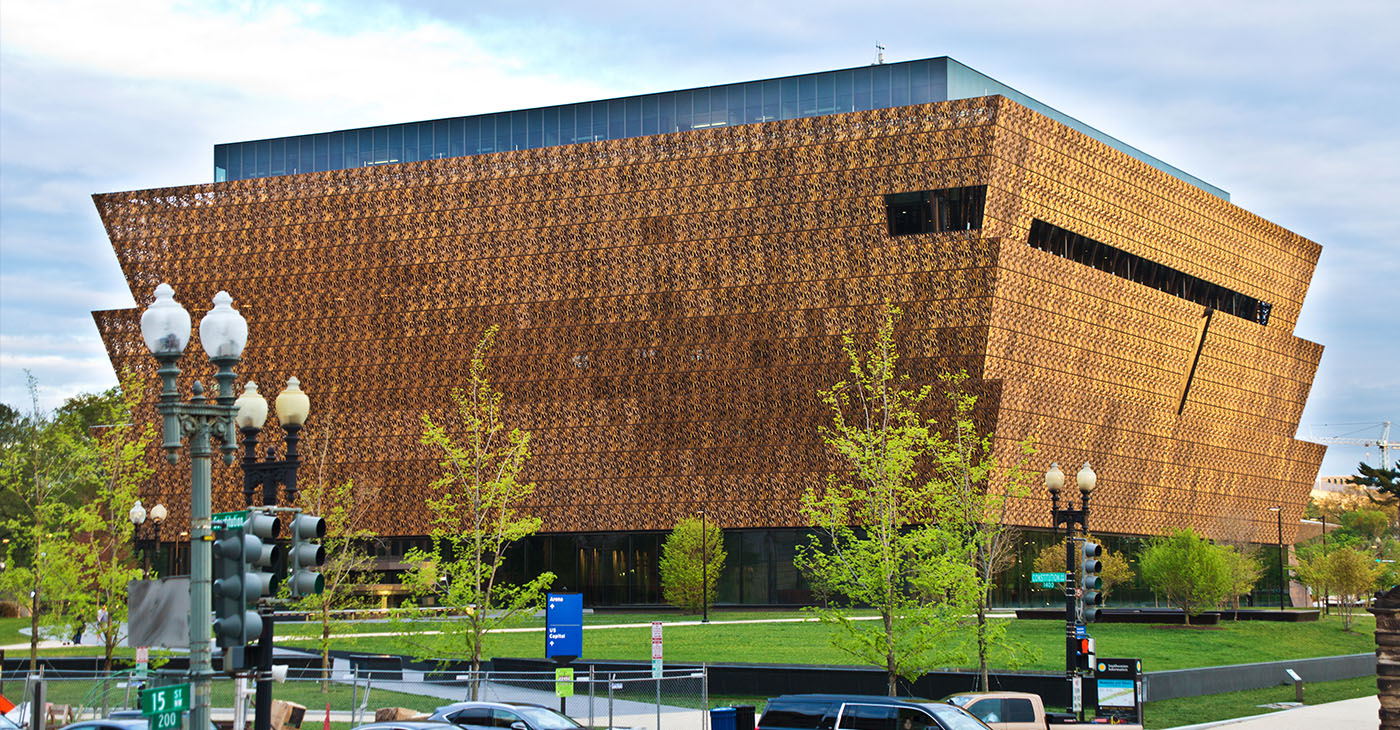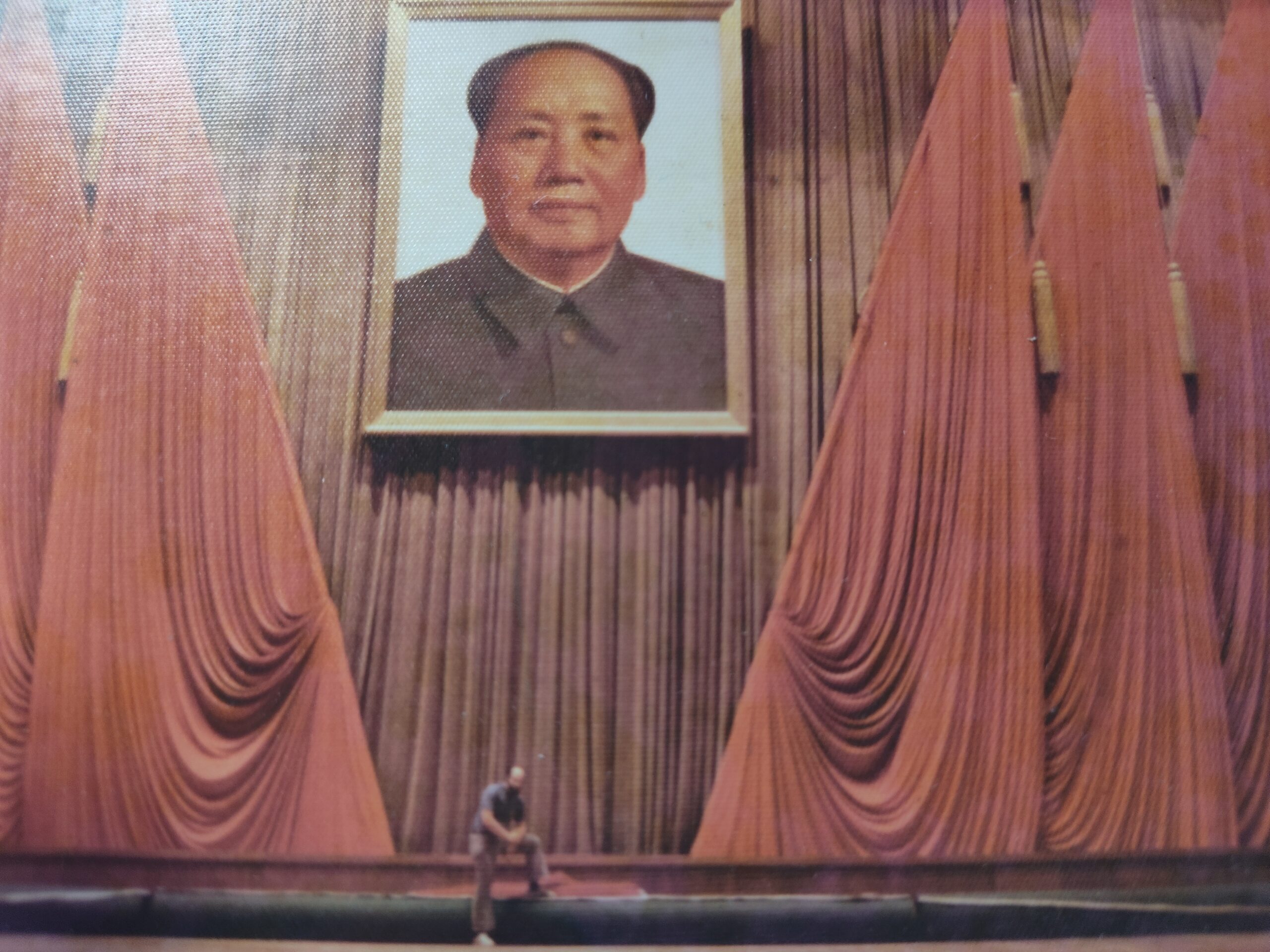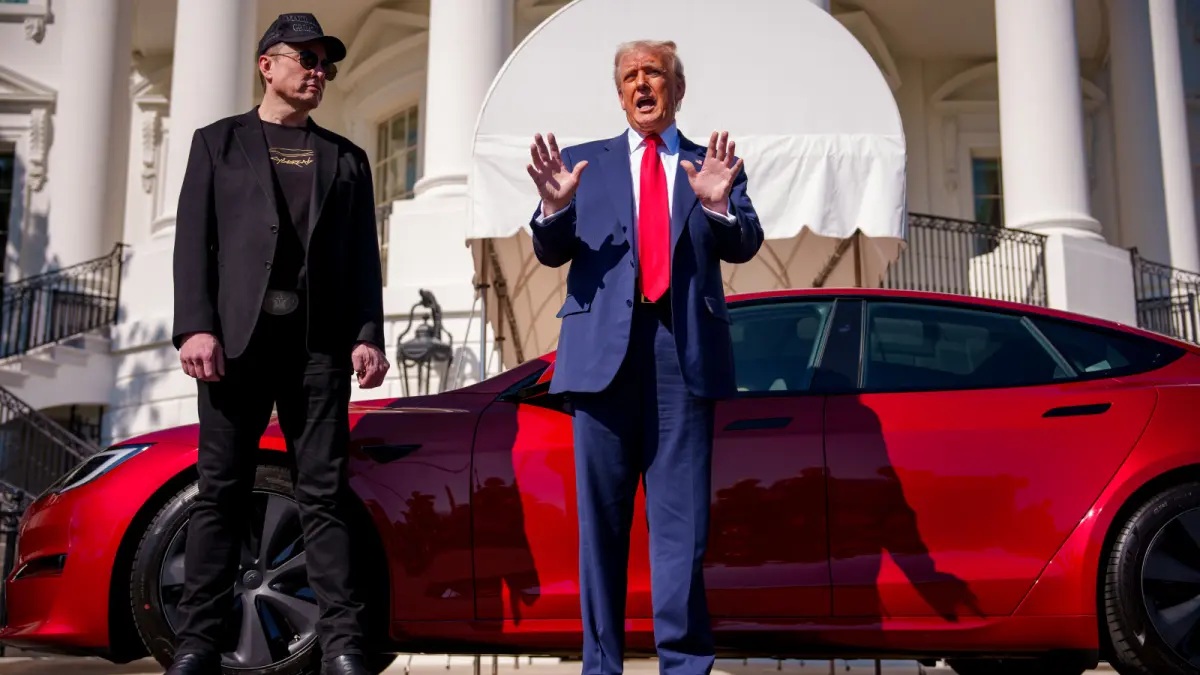(ThyBlackMan.com) The Smithsonian Institution’s Secretary Lonnie Bunch and other staff members at the Smithsonian are upset, and they have every right to be. The Smithsonian network spans 21 museums and has become one of the latest presidential targets through an executive order entitled “Restoring Truth and Sanity to American History.” The order directs the removal of “improper, divisive or anti-American ideology” from its museums.
The order reads, “Once widely respected as a symbol of American excellence and a global icon of cultural achievement, the Smithsonian Institution has, in recent years, come under the influence of a divisive, race-centered ideology.” Civil rights advocates, historians, and Black political leaders have sharply rebuked the president for specifically calling out the National Museum of African American History and Culture (NMAAHC) by name in the executive order. About 60% of the Smithsonian’s funding comes from the federal government. Bunch, the first Black person to lead the Smithsonian, said the museum will “remain committed to telling the multi-faceted stories of this country’s extraordinary heritage” in a message shared with staff members.

The NMAAHC chronicles chattel slavery, Jim Crow segregation, and its lingering effects. It also highlights the determination, resilience, successes, and contributions of individual Black Americans and Black institutions. Donald Trump first visited the museum one month after taking office during his first term. Reading Black history from a book is one thing, but it’s another to see it with your own eyes. While books can serve as a good source of information, they are no substitute for a museum filled with exhibits that bring to life the struggles and accomplishments of the Black experience. These exhibits produce knowledge and insight and give a person a level of compassion and empathy that may not have existed before. During the 2017 visit, Trump was accompanied by his nominee for Secretary of Housing and Urban Development, Ben Carson, and his wife, Candy; Alveda King, the niece of Martin Luther King Jr.; Sen. Tim Scott of South Carolina; presidential aide Omarosa Manigault; and his daughter, Ivanka Trump. Former Smithsonian Secretary David Skorton and Lonnie Bunch, the NMAAHC director at the time, led the tour.
“This is a truly great museum. I’ve learned, and I’ve seen, and they’ve done an incredible job. What they’ve done here is something that probably cannot be duplicated. It was done with love and lots of money, right Lonnie? We can’t avoid that. But it was done with tremendous love and passion and that’s why it’s so great,” Trump said in 2017. Trump is correct; it is a great museum. The president saw firsthand the true depth and struggle of the Black experience. He viewed several exhibits, including the “Paradox of Liberty.” Bunch mentioned how the 612 bricks surrounding a statue of Thomas Jefferson represented each of the 612 enslaved people Jefferson owned during his lifetime. Lonnie Bunch explained, “You can’t understand Jefferson without understanding slavery. For us, this whole museum is about humanizing stories of people left out of history.” The president and members of his entourage also witnessed the exhibit featuring Ben Carson and his accomplishments as a surgeon.
Trump never returned to the museum, but his public views and opinions are much clearer now. Could it be that in 2017, instead of witnessing something valuable and worth maintaining, Trump was taking note of something that the MAGA world needed to destroy? As part of the first Trump administration, Ben Carson is in a unique position. He is a Black Republican who is a Trump enabler, yet his legacy as a renowned brain surgeon, which is displayed at the NMAAHC, could be under threat. Obviously, the Carson exhibit didn’t sway Trump’s 2025 rhetoric and actions. Will Ben Carson publicly defend the NMAAHC or simply go along with the Project 2025 goals concerning the museum? Carson could be a powerful voice in coming to the museum’s defense and sounding the alarm against the authoritarian control of the nation’s premier museum complex. He could also be an influential voice to other Black Republicans, which is unlikely given his Project 2025 ties. The former HUD secretary authored a radical MAGA Project 2025 proposal to gut HUD by proposing a “wholesale overhaul” of HUD to undo “corrosive progressive ideologies” and “race-based policies.” It is unlikely Carson will have a Michael Cohen moment and turn against Trump.
Where does that leave Sen. Tim Scott? He was there in 2017 as part of the president’s Black inner circle, but he, too, will likely remain silent. There is a long list of Trump enablers whose failure to speak out continues to fail America. Sen. Scott, Sen. Mitch McConnell, and Supreme Court Chief Justice Roberts are among a few on that shameful list. David Blight is a historian and professor of history and African American studies at Yale University. He regards the moves targeting cultural targets such as the Smithsonian, Kennedy Center, Institute of Museum and Library Services, National Public Radio (NPR), and the Public Broadcasting Service (PBS) as drawn from the authoritarian playbook. Blight noted, “It’s what the Nazis did. It’s what Spain did. It’s what Mussolini tried. This is like the Soviets: they revised the Soviet encyclopedia every year to update the official history. Americans don’t have an official history; at least we’ve tried never to have to.”
Written by David W. Marshall
Official website; https://davidwmarshallauthor.com/
One may purchase his book, which is titled;

















September 13, 2019
Many years ago I lived in Saigon, Vietnam now known as Ho Chi Minh City. I had a Chinese tailor who made many beautiful suits for me. We often talked at my fittings and when I would come to pick up my suits and eventually I discovered what she really thought about me. One day while I was walking down the street in Saigon I noticed my tailor ride by in her car and she didn’t stop to pick me up even though it was very hot. I confronted my tailor about not picking me up a few days later and she sternly replied ” no can do !”I told her that I had two cars in America and both of them were better than hers and she angrily replied that I was not telling the truth and that a black man living in America has nothing, no money, no land, no property, nothing, at least that’s what she was told. It was then that it dawned on me how misrepresented African Americans really are globally. The National Museum of African American History and Culture goes a long way towards authenticating the lives of African Americans.
A few months ago I traveled to Washington D.C. to tour our” National Museum of African American History and Culture”. This Smithsonian Museum’s beautiful building is located on Constitution Avenue N.W., and was booming with visitors from seemingly all nations and all walks of life. There are security services and tour guides stationed throughout the building that are more than willing to assist visitors as they move through the ramped, multi -leveled, spacious, circular, wheelchair accessible edifice, and souvenirs can be purchased from a delightful museum store to help mark this historic visit. This very interesting tour of the museum begins when you enter and walk into the Concourse room which features “Sweet Home Café “, and a Theater. Proceed on to the entrance to the “Contemplative Court” and “History Galleries “(C1-C3). C3 is titled “Slavery and Freedom 1400-1877 “. This gallery features statues, written comments, and information on how African slaves were dispersed throughout Europe and the world, actual artifacts, to include slave handcuffs and shackles and audio/visual displays dating from chattel slavery’s beginning through the Civil War. History Gallery C2 is titled ” Defending Freedom, Defining Freedom: The Era of Segregation 1876 – 1968. This exhibit features numerous sights and discussions of the ” Jim Crow Era ” to include an actual railroad car, and a portion of a Florida prison tower that was in use during segregation, an interactive Lunch Counter which shows excerpts of Civil Rights clashes with police and American citizens, the Emmett Till Memorial, a Tuskegee Airplane, and other audio/visual displays relative to this time period. C1 is titled ” A changing America: 1968 And Beyond “and features exhibitions relative to the events of 1968 to include Audio/visual displays of some of the marches of the Civil Rights Movement. Level one (i.e. L1) is titled “Heritage Hall “, and features an information counter and a museum store. L2 features classrooms, a library, an interactive gallery, and center for African American Media Arts and an Explore Your Family History Center. L3 is titled “Community Galleries” and features audio/visuals on sports, Making a Way out of No Way “, and “The African American Military Experience.” L4 features audio/visuals on ” Visual Arts and the American Experience “, ” Musical Crossroads “, ” Cultural Expressions “, and ” Taking the Stage .” With all displays considered the National Museum of African American History and Culture provides a day’s outing that is both informative and entertaining so teachers, civic organizations, tour guides, and others interested in American history and are seeking a truly memorable tour, put on some comfortable attire and make your way to our nation’s capital to experience the thought provoking, and eye opening “National Museum of African American History and Culture”.